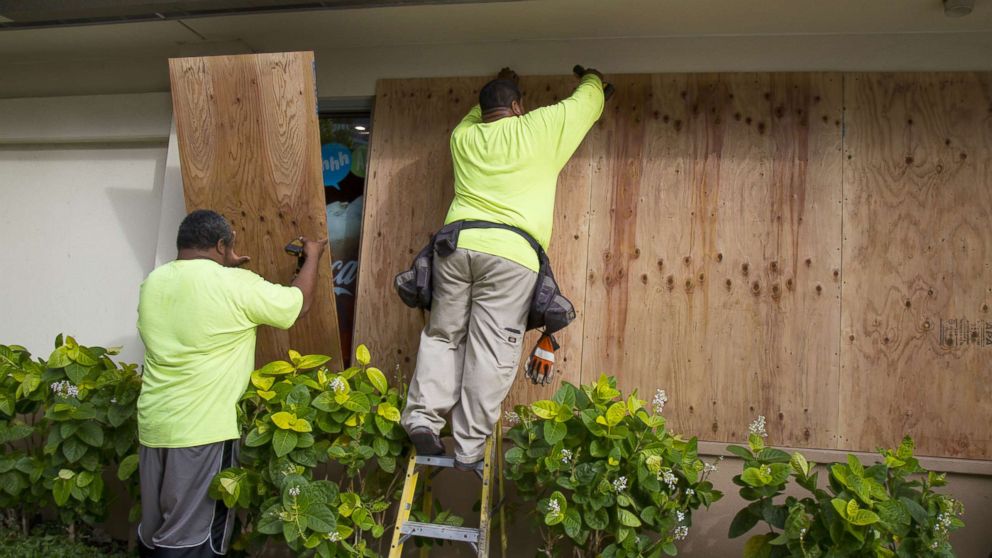
As Hurricane Lane lurches north, the Category 3 storm has already dumped more than 31 inches of rain on Hawaii‘s Big Island, bringing catastrophic flooding.
The life-threatening flooding could even lead to landslides or mudslides.
Rainfall rates in the outer bands of the hurricane may reach 1 to 3 inches per hour, meaning flash flood watches will remain in effect through late Friday.
Lane is expected to remain a hurricane for the next 12 to 24 hours but increasing wind shear could weaken the storm more quickly over the next two to three days.
The storm is forecast to pull away from Hawaii by late Saturday.
Hawaiian residents and visitors flocked to stores to stock up on food, water and gas ahead of the storm. Some businesses and homes have already been boarded up.
The hurricane shuttered public schools and prompted evacuation centers to open in all four counties.
Water, meals and generators are being delivered to the islands, officials said.
President Donald Trump said he authorized an emergency disaster declaration to provide support to Hawaii.
“Our teams are closely coordinating with the state and local authorities,” he tweeted Thursday. “You are in our thoughts!”
It’s rare for hurricanes to hit Hawaii. An area of high pressure that sits to the northeast of the islands typically steers hurricanes away. This high pressure is the strongest from May through October, which is also prime hurricane season.
The Hawaiian islands are also surrounded by cool water and tropical cyclones need ocean water temperatures to exceed 80 degrees to strengthen.
The last hurricane to make landfall in Hawaii was Iniki in 1992. Lane would be the third on record.
Category 1 Hurricane Dot hit in 1959 and catastrophic Category 4 Iniki came ashore in 1992. Both made landfall on the island of Kauai.
Category 1 Hurricane Iwa also had a major impact on Kauai in 1982 but because its eye did not hit the island, it wasn’t officially counted as making landfall there.





